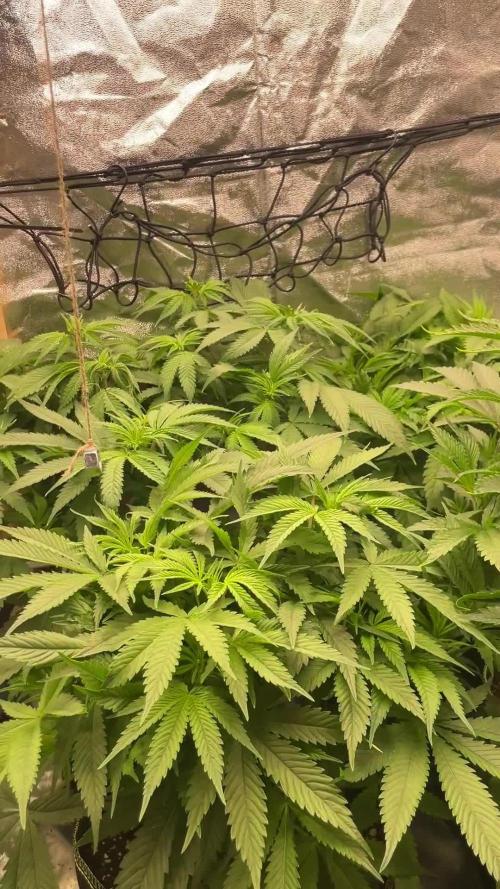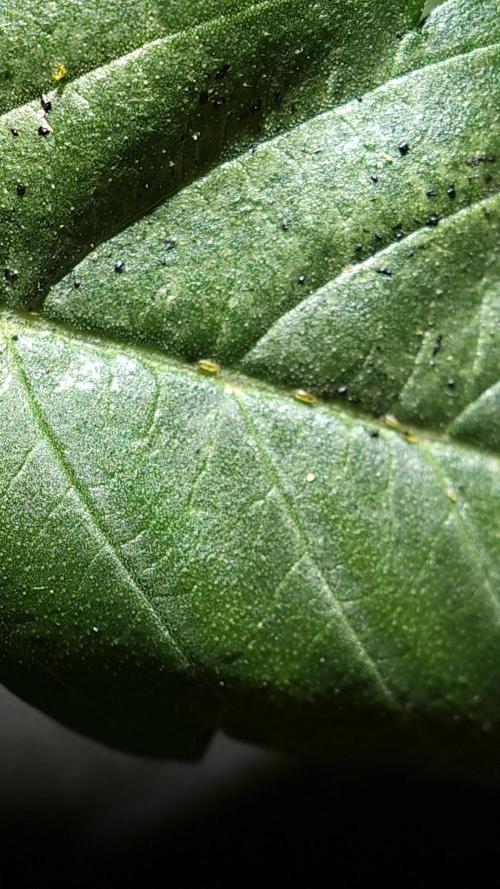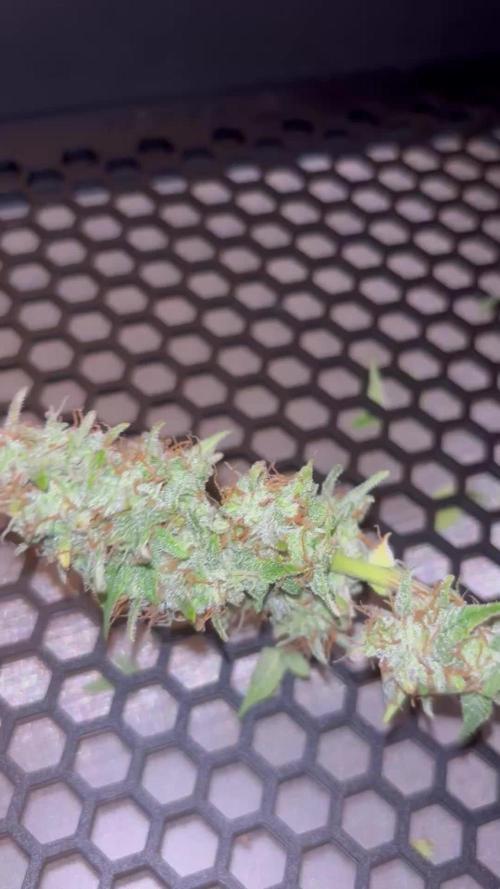The Grow Awards 2026 🏆 

































Likes
Comments
Share


@DreamIT
Follow
-Sponsored by:
🎆ANESIA SEEDS🎆-💡VIPARSPECTRA💡-💐GREEN BUZZ LIQUIDS💐-🛠️WEDRYER🛠️
🏁18/6 hello growerz, with today I start the resumption of diaries on GD. I have 13 new genetics in germination and as many diaries. I start by putting the seeds in water for 24 hours, after a day I will put the two seeds in two different jiffies, one with humic acid from greenhouseseeds and the other with just plain water. Get comfortable and follow the updates 😉👋🦄
19/6 The seeds were divided and placed in two different jiffies, one with humic acid and one with water only.
21/6 after another 24 hours in the dark the jiffies were moved under the lamp. let's start the dances!
23/6 nothing to report
24/6 still nothing to report
25/6 still no news
30/6 it was a really long wait, but the second one was finally born, just when I had lost hope. yeeeeee
__________________________________________
Personal advertising (contains affiliate links)
__________________________________________
🦄 The varieties of Anesia seeds all have an extremely high content of THC and cannabinoids. They were bred specifically for the effect and therefore find wide applications for medical purposes as well.
✅https://bit.ly/Anesiaseeds_
__________________________________________
Did you know that Green Buzz Liquids fertilizers are 100% vegan? A complete line of products ready to give the best to each of your plants! Visit the site and see my journals to see how they work 🦄
🤯 And with the code "dreami t" you will immediately receive a 15% discount on your purchases
✅https: //bit.ly/GreenBuzzLiquidsPro
__________________________________________
👀 Are you looking for a good lamp to start with? 👀
🌞Viparspectra has something more than the others, take a look at their site.
⏩ Use "GDVIP" for an extra discount on amazon or "DREAMIT3" for an extra 5 %% discount
👀 Search for it on Amazon
✅Amazon USA: https://amzn.to/30xSTVq
✅Amazon Canada: https://amzn.to/38udUVe
✅Viparspectra UE: bit.ly/ViparspectraUE
✅Viparspectra USA: bit.ly/ViparspectraUS
______________________________________________
🌈 Tired of blowing on your weed hoping it dries quickly? Check out the Wedryer website! You will find a well-made accessory that will help your weed dry in just 8-10 days without the annoying risk of finding mold or other annoyances! (no affiliate links)
✅https: //bit.ly/Wedryer_
______________________________________________
📷🥇Follow the best photos on Instagram 🥇📷
https://www.instagram.com/dreamit420/
Backup
https://www.instagram.com/dreamit4200/
🔻🔻Leave a comment with your opinion if you pass by here🔻🔻
🤟🦄💚 Thank you and good growth 💚🦄🤟
Likes
6
Share


@420DeepGrow
Follow
!Volvemos a la carga con la Titan F1 de Royal Queen Seeds!
Después de una primera experiencia muy positiva, me he animado a repetir con esta genética que ya demostró su potencial. 💪
Para asegurar un buen arranque, estoy utilizando de nuevo el Seed Booster de RQS, garantizando un enraizamiento fuerte y saludable desde el inicio. 🚀
La iluminación corre a cargo de la ya bien conocida TS1000 de Mars Hydro, que en la primera vuelta se portó de lujo, ofreciendo una luz intensa y homogénea. 💡
Con ganas de ver si esta vez consigo aún mejor rendimiento y resina
Seguimos creciendo fuerte! 💪
Likes
2
Share


@Luke_Lee
Follow
———————————————
WEEK 8 / DAY 50-57
BLOOM WEEK 1 / DAY 1-7
Mars Hydro FC-E3000
Floragard Professional GrowMix
11L fleece bags
Light: 50cm
Schedule: 12/12;
PPFD: 815umol/m2/s
DLi: 35mol/m2/d
22° C - 65RH
1,5L per Plant
Hesi Bloom Complex (5ml/1L water)
Hesi BOOST (2ml/1L water)
PH 6,5
Fan, extractor and pump ON 24/0.
————————————————————
-DAY-50 / BLOOMDAY-01
The vegeation phase of six weeks comes to an end and flowering is initiated. The light was changed to 12/12. Currently some problems with the humidity (65-75%) but the air circulation is good.
-DAY-52 / BLOOMDAY-03
Today each plant was watered with 2L of water with 4ml Hesi Bloomcomplex and 2ml Hesi BOOST.
Likes
9
Share


@Mr_nugs_lover_David
Follow
She has performed very good with the lst method, nice plant, fast growth, quality flowers, it's a very good choice for everyone who's looking for a good quality strain at affordable prices. Very nice genetic, this phenotype concretely has a very sweet and floral terps. You can check the other 2 phenos of ak420 here at my page
Likes
20
Share


@MrGoonai
Follow
07/13/2025 - Day 105
Short Facts:
- 75cm tall
- VPD @ 1.0
- Fungus gnats and thrips are still there
- predatory mites are deployed to the battlefield (the soil!)
- green lacewing larva are also deployed and are placed on the card near the outbreak
------------------------------------------------------------------------
Well, she’s developing, but it seems like she’ll need more time than her sister, because the buds are still quite small. However, she’s starting to show some really beautiful deep purple leaves around the flowers. She might turn out to be quite stunning when she finishes.
Unfortunately, she’s now also infected with thrips and more than I had seen the week before. I hope the green lacewing larvae will do the job, but just to be safe, I’m going to order more this week. The fight is on! I also uploaded some pictures and a video of one of the leaves they’ve basically destroyed.
Really sucks that this is happening so late into the grow.
Likes
3
Share


@KushManAdam420
Follow
bit of light stress in the last weeks photos, everything has cleared up
still watering with silica when pot is dry. might just do a plain watering
we have started flowering at day 18 on one of the crinkles , the rest of the room has now followed
Processing
Likes
5
Share


@CRIPPYGROWS
Follow
she's grown so nice ...topped her at the third node...spilled a little bit of nutes on one of the leaves any suggestions on what to do? cut it off leave alone? fan leaves are really nice and big..i also have a container with eggshells and banana peels fermenting in water that i mix in with her nutes..
Likes
18
Share


@Mikhail19
Follow
Towards the end of week 3 i applied LST'ing to 2 of the 3 plants. I started a small dosage of EHG nutrients. 2ml per 1L of grow,micro and bloom. My plants are looking great and are growing fast.
Likes
14
Share


@Robertgrowsit86
Follow
Bag appeal on point , wonderfully complex nose on the first two we harvested , over ripe fruity notes with earthy , musk. The other two that are laggin we have two left
To harvest from this same cultivar but the last two have different smell profile . Burnt garlicky notes with earthy , pungent nose as well. I had to add a plant to the harvest. These took alot of extra time. But just gonna post few pics of the last two ladies from seed supreme, I almost lost these last two
Processing
Likes
15
Share


@eldruida_lamota
Follow
Buenas tardes familia, actualizamos semana y os traigo Malas noticias , una cookies no aguanto y tuvimos que quitarla, quedo atrapada en el caparazón de la semilla y murió.
Pero renovaremos hueco no se preocupen
2/3 y por manazas por no quitar la semilla a tiempo .
No obstante controlamos todo igual temperatura humedad todo correcto , no tiene que suponer problemas sacar el resto adelante.
Os dejo algunas fotos y veis El Progreso.
Likes
6
Share


@Aleks555
Follow
Zamnesia - Pineapple Express (F1 Auto) - 76 Days
The time has come—harvest day! It's bittersweet to say goodbye to this incredible journey, but all great things must come to an end. The Pineapple Express (F1 Auto) has been a true wonder, delivering both in strength and flavor, with an aroma that's unforgettable. This strain produced the hardest buds we've ever grown—rock-solid and packed with resin, the likes of which we’ve never seen before.
A massive thank you to Zamnesia for providing these remarkable seeds! And an extra special shoutout to Xpert Nutrients for the outstanding fertilizers. The results speak for themselves—your nutrients truly work miracles, creating those dense, powerful buds that we're so proud of.
Stay tuned for the final photo and video showcase of this incredible harvest. We're thrilled to share it with you all!
Xpert Nutrients – The Key to Powerful Harvests
When it comes to achieving the best results, we trust only proven solutions. And with Xpert Nutrients, our plants are getting nothing but the best! These nutrients are not just a product, they’re a true catalyst for growth and powerful yields. Thanks to a balanced formula, each dose nourishes our plants with essential elements, promoting their health, strength, and abundant harvests.
Every cycle with Xpert Nutrients shows progress. We see incredible results: dense, resinous buds, rich aromas, and, of course, yields we can be proud of. With these nutrients, there are no compromises – only maximum performance!
Thank you, Xpert Nutrients, for your continuous support and for helping us unlock the full potential of our plants. The results speak for themselves!
Processing
Likes
49
Share


@MadeInGermany
Follow
Hi everyone 🤗.
Your last vegi phase has been reached :-).
It developed beautifully 😀, and has become a huge bush.
I am very excited to see how it will look in bloom 😅.
In the coming days it will be placed in the flower chamber and can then spread out for production :-).
I wish you a nice week, stay healthy 🙏🏻 and let it grow 🌱
Strain : Sour Diesel
☝️🏼😍
Genetic:
Diesel x Northern Lights
👍
Vega Lights : 2 x Todogrow Led
Quantum Board 100 W
💡
Flower Lights : 2 x Todogrow Led
Cxb 3590 COB 3500 K 205 W
💡 ☝️
Soil : Canna Terra Professional +
☝️
Nutrients : Canna Terra Vega, Canna Terra Flores, Rizotonic, Cannazym, CANNA Boost, Pk 13/14,
Canna Cal/Mag, Canna Ph - Grow,
Canna Ph - Flores
☝️ 🌱
Water:
Osmosis water mixed with normal water (24 hours stale that the chlorine evaporates) to 0.2 EG. Add Cal / Mag to 0.4 Ec Ph with Organic Ph - to 6.0
💦 💧
Likes
11
Share


@Oyziphar
Follow
👉 This year, RQS launched 5 new regular strains. The seeds are packed with10 pieces. 38 seeds out of 50 turned out beautiful (see my previous diaries).
👉 Before I put the plants into bloom, I took 2 cuttings from each plant. As soon as I knew which were the female plants, I deleted the male plants and the corresponding clones.
👉 Now I am going to raise the cuttings and flower the female plants in 5 new diaries. This diary is about the Garlic Mists # 1, # 6, # 7.
Likes
7
Share


@Leofongrow
Follow
😅😅Girls were developed by different methods one were topped when she has only two nodes (third I topped), second was only LSTed. They were transplanted once from 10L bag to 20L bags.
Topped roots developed much better then untouched had. Topped growed for about 71 day, and untouched 72.
Wife noticed mold on few colas, I cutted them and cut out the affected areas. Bushes were Ripenning for about 12 days, Unfortunately I didn't flushed them at all.
So topped girl was putted to hermetic container and placed in freezing camera exactly from cutting. Secon one I putted to growbox under the out fan.
I bought vacuum pump and jars, and dry topped by quick freezing method. And untouched was dryed by usual way. After all results are:
Wet weight:
Topped: 450g buds&stems; Untouched: 380g buds&stems.
Dry weight:
Untouched: 80g buds, 10g stems; Topped: 110g buds, 13g stems.
This is my firs grow, I think its great result. The common mistakes are: uncontrolled environment ph, humidity, and that I stopped plant growing height with early low distance to the lamp.
Thanks Bulks for great genetics .: 1:
Awesome strain, Great, really easy to grow, I think if I had fan I could easily avoid mold. But I haven't =)))
High is awesome energetic uplifting, I wanna go to training or begin to cleaning in my house.
Good luck. May the Force be with You.00
Likes
9
Share


@Munchiesfrommars
Follow
I like the first harvest of the clone.
Lets see what the second clone will give us!
One love Durban Poison !
Likes
37
Share


@The_Bearded_Grower
Follow
welcome to Day 64 2/19/2021 she still has not really looked like she is putting on weight but I'm still hopeful there is not much to say really at this point so if you have any questions shoot.
happy growing and as always keep your stick on the ice
Likes
69
Share


@Crazyweedpt
Follow
(The numbers of this harvest are from a single plant) I ended REAL ORGANIC and let plants dry by themselves on their pots outside the tent and gradually day after day i was picking and selecting dry buds from the branches 2 smoke m all! This particular diary gave me a sense of adventure, and a lot of fun, i´ll always remenber that made my quareentine a lot easier to live, by that time i felt i was prepared even for the end of the times if it comes to that 😂





















